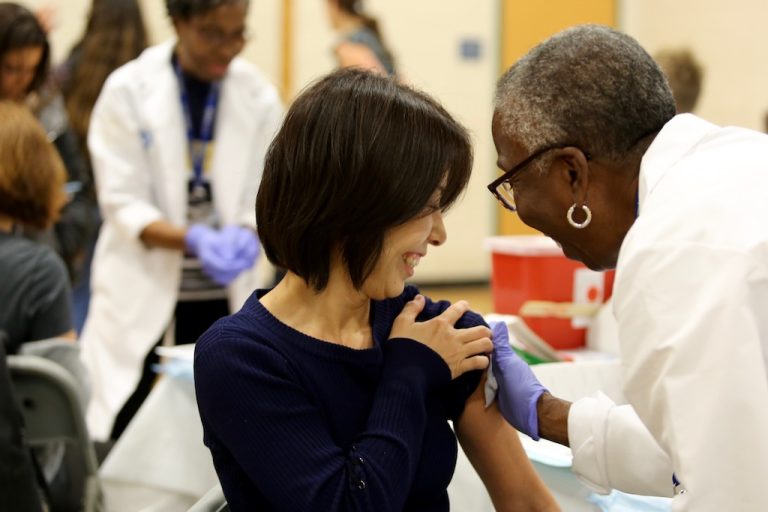Flu Deaths Surge Amidst Vaccine Skepticism and Government Inaction
The United States is grappling with a severe flu season, witnessing a surge in flu-related deaths not seen in recent years. Preliminary federal statistics analyzed by Stateline reveal a grim reality: approximately 9,800 flu-related deaths occurred in January and February 2025, the peak months of the flu season. This represents a stark increase from the 5,000 deaths recorded during the same period in 2024 and the highest number since 2018, when approximately 10,800 deaths were reported. This alarming trend coincides with growing vaccine skepticism within the Trump administration and some state legislatures, raising concerns about the potential consequences of eroding public trust in vaccinations.
The Department of Health and Human Services’ decision to cancel or postpone crucial meetings focused on preparing for the upcoming fall flu season has further fueled anxieties. These meetings serve as a platform for experts to discuss anticipated influenza strains and strategize vaccination efforts. The cancellations have sparked protests from medical professionals and state and federal officials alike. Senator Kirsten Gillibrand of New York has highlighted the severity of the situation, stating that her state is experiencing its worst flu season in at least 15 years, with flu-related deaths and overall mortality increasing as the healthcare system struggles to cope with the influx of flu patients.
Experts warn that delaying vaccine planning will only amplify misinformation and discourage people from receiving life-saving vaccinations. Dr. Akram Khan, an Oregon pulmonologist and associate professor at Oregon Health & Science University, emphasizes that such delays weaken pandemic preparedness and undermine public confidence in vaccination efforts. Adding to the concern is the stance of U.S. Health and Human Services Secretary Robert Kennedy Jr., who has publicly expressed doubts about the necessity of vaccines, including flu vaccines, despite substantial evidence demonstrating their effectiveness in reducing deaths and hospitalizations.
While annual fluctuations in flu-related deaths are expected due to variations in flu strain severity and vaccine effectiveness, the current surge is raising questions about the role of vaccine hesitancy. This hesitancy, fueled by misinformation and political mistrust of government, is potentially contributing to the increased severity of the flu season. Experts acknowledge that the Northern Hemisphere has experienced a challenging winter for viral respiratory infections, but the United States appears to be disproportionately affected. This raises concerns that lower vaccination coverage may be playing a role in the higher death toll.
Federal statistics indicate a worrying trend of declining flu vaccine distribution in the United States. As of the first week of 2025, flu vaccine distribution was down 16% compared to 2022. Stateline’s analysis of provisional data from the Centers for Disease Control and Prevention (CDC) highlights the geographical distribution of flu-related deaths, with the highest death rates observed in Oklahoma, Minnesota, Pennsylvania, South Dakota, and Kentucky, all exceeding four deaths per 100,000 population. Certain counties within Florida, New Jersey, Pennsylvania, Oklahoma, and Kentucky have even higher rates, reaching approximately six deaths per 100,000 population. Older individuals, white people, and American Indians have been disproportionately affected by the surge in flu deaths.
Tragic stories of flu-related deaths across the country underscore the severity of the situation. A 43-year-old father in Indiana succumbed to the flu after a brief illness, and the deaths of two 10-year-olds in Prince George’s County, Maryland, prompted a surge in demand for flu vaccines at local schools. Doug Sides, a pastor in northern Florida, has officiated funerals for three members of his congregation who died from the flu within a single month, all over 70 years old. This starkly contrasts with only one COVID-19 death from his congregation during the pandemic. Sides urges his community to practice hand hygiene and stay home when sick, but he himself admits to receiving conflicting advice about flu vaccines due to his family history of cancer. This underscores the confusion and uncertainty surrounding vaccination in the current climate. Despite the rise in vaccine skepticism, many states and local communities are actively working to educate the public about the safety and efficacy of vaccines. Burlington County, New Jersey, which has recorded the highest flu-associated death rate this year, has extended its free vaccine clinics in response to the severe flu season. Oklahoma, facing high death rates particularly within the Cherokee Nation, is running a public awareness campaign emphasizing the safety, effectiveness, and free availability of flu shots at community health centers. However, these efforts are challenged by low vaccination rates in many states, including Oklahoma, Louisiana, Mississippi, and Texas, compared to states like Maine, Connecticut, Vermont, Wisconsin, and Minnesota, which have higher vaccination rates but are still experiencing declines since 2022. The phenomenon of "vaccine hesitancy" is a growing concern, fueled by misinformation and distrust. Addressing vaccine hesitancy requires a multi-pronged approach involving clear and accurate information from trusted healthcare professionals, combined with efforts to combat misinformation and rebuild public trust in scientific and medical guidance. The current flu season serves as a stark reminder of the importance of vaccination in protecting public health.


